Traditional Japanese Futon – All You Need to Know
Walmart and IKEA may be futon centers nowadays, but this traditional Japanese futon has a much longer and richer history. They were prevalent in Japan for centuries before they were ever accepted in the West and to your surprise, it may look nothing like a futon sofa bed you usually see. Let us explain.
What Is a Traditional Japanese Futon?
It seems like a child’s play question, but there is still some controversy about what forms a futon. Can we consider futon a couch? Whether it is a folding sofa frame or just a bed with no springs?
The answer to that question is surprisingly straightforward: futon, as the Japanese word, in fact, refers to “bed”. The whole traditional Japanese FUTON comprises of three pieces and was placed on the ground or on a tatami mat. The parts include the shikibuton – the mattress; the kakebuton – the comforter; and a pillow – called makura. Basically, futon is a bed without bed frame. A Western Style Futon you know may have the Futon Frame, Futon Mattress only, and Futon Slipcover. But it is not traditional, we don’t mention it here.
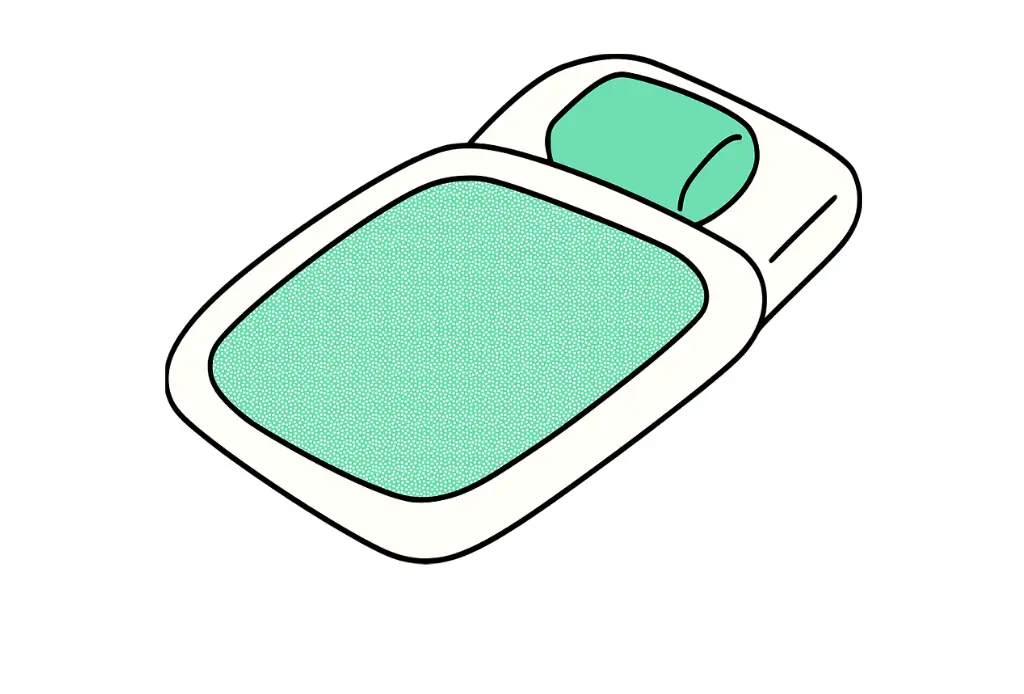
- A Traditional Japanese Style Futon includes 3 parts named the Shikibuton, Futon, Kakibuton
SEE MORE:
Tatami Mat
Tatami mats are traditionally a netted grass or reed mat that provides a light yet solid support. They actually prevent your Shiki futon from laying flat on the floor to provide extra cushioning as well as breathability. In some Japanese homes, people use them as whole coverage flooring or within pieces of furniture.
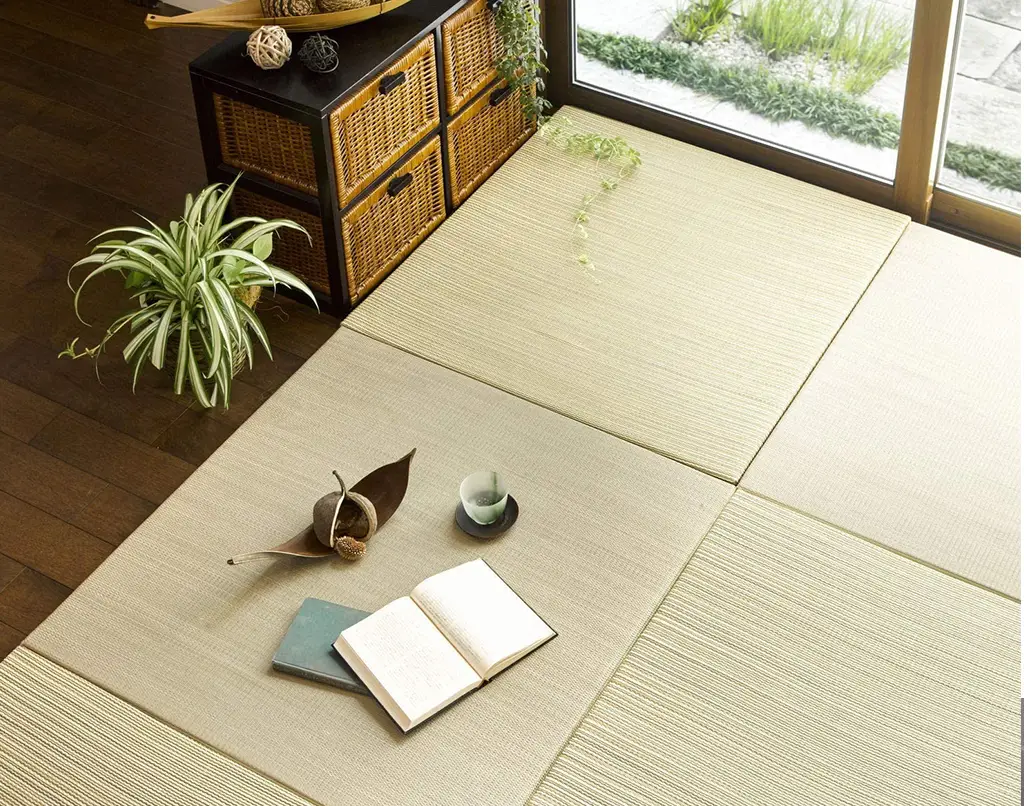
- A Japanese futon is rested on a tatami mat made of straw instead of housed in a frame.
Materials to make modern tatami mats may be synthetic foams, rubber, or others to provide a similar effect. People use modern tatami to provide both protection for flooring as well as provide a comfortable walking or sleeping surface.
>> Looking for more location guides, visit here <<
Shikibuton – The bed cushion
Most significant part of a futon is a Shikibuton. So, how is the shikibuton, which is the cushion in the Japanese futon setup, different from the Western futon? Thickness. The shikibuton is about half the thickness of the standard Western futon–ranging from 3 – 4 inches of loft. But it isn’t that simple; the difference stems from the fact that Shiki futons are almost always exclusively made of cotton both in its cover and fill. The casing is usually a zippered cover made of woven cotton or cotton duck weave (a heavy cotton or linen weave, also called canvas). These are an ecologically friendly choice in both construction and use as it leave a very low environmental footprint.
 Traditional shikibutons are slim, rectangular, cotton-stuffed sleeping cushions
Traditional shikibutons are slim, rectangular, cotton-stuffed sleeping cushions
Foam shikibuton choices are not true Japanese Futons. Although they may offer comfort and support, be aware that this is not a traditional Shikibuton, and it may not store as easily either.
Kakebuton – The Comforter
These comforters are similar to western duvets, usually, they come with removable covers too. These covers are usually light and breathable hand-pulled silk.
This makes them an excellent alternative to just any regular comforter. Sometimes, regular comforters can leave you hot and sticky or even feeling too cold. A kakebuton is suitable for regulating your body temperature to give you a perfect night’s sleep and a lot of the time they are also hypoallergenic.
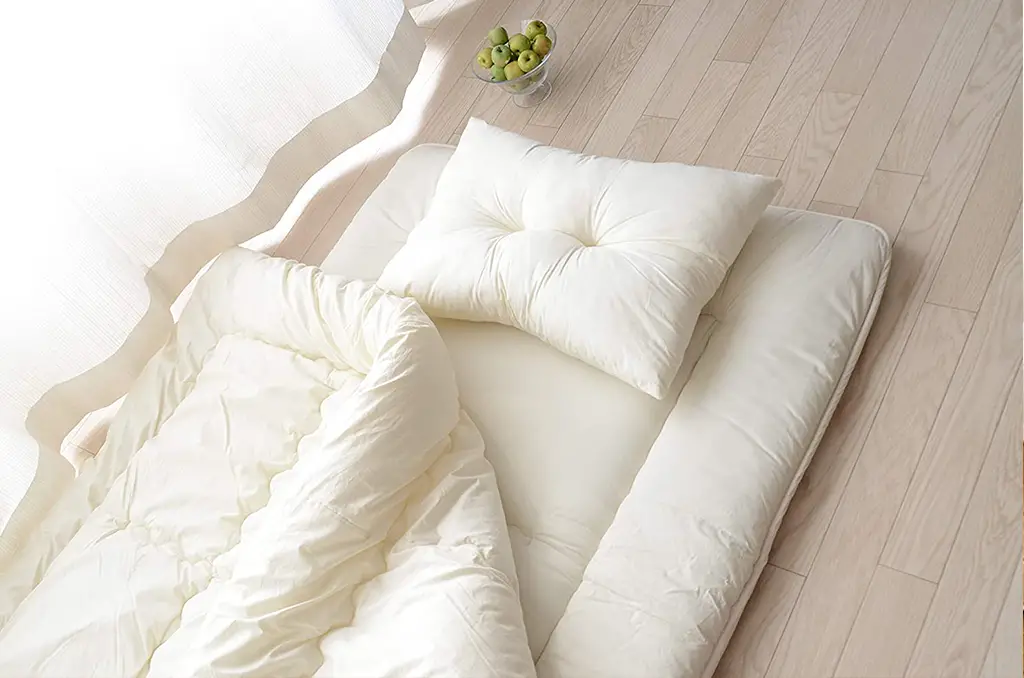
Kakebutons are breathable and lightweight thanks to the silk filling which will also maintain your body temperature and keeps you warm.
This is how they hand made authentic futon in Japan
Why a Traditional Japanese Futon?
Best for back, blood vessels, and health
Futon beds are one of the keys to good health in Japan. There are a few advantages of sleeping on a futon, the most realistic being refinement in back pain. Believe it or not, futon firmness helps to keep joints in the right position. In contrast, you will definitely wanna avoid soft surfaces that end up sagging and especially if you’re on a mattress that is worn down and one side is dipping in or the other. When you’re relying on this kind of soft tissue instead of your bones to support the weight, your body can sag into all kinds of positions and shapes. And I’m not just talking about your spine, all the joints in your body can become unsupported and sag into shapes they really shouldn’t be in. This may lead to backaches or even severe sprains on your back.
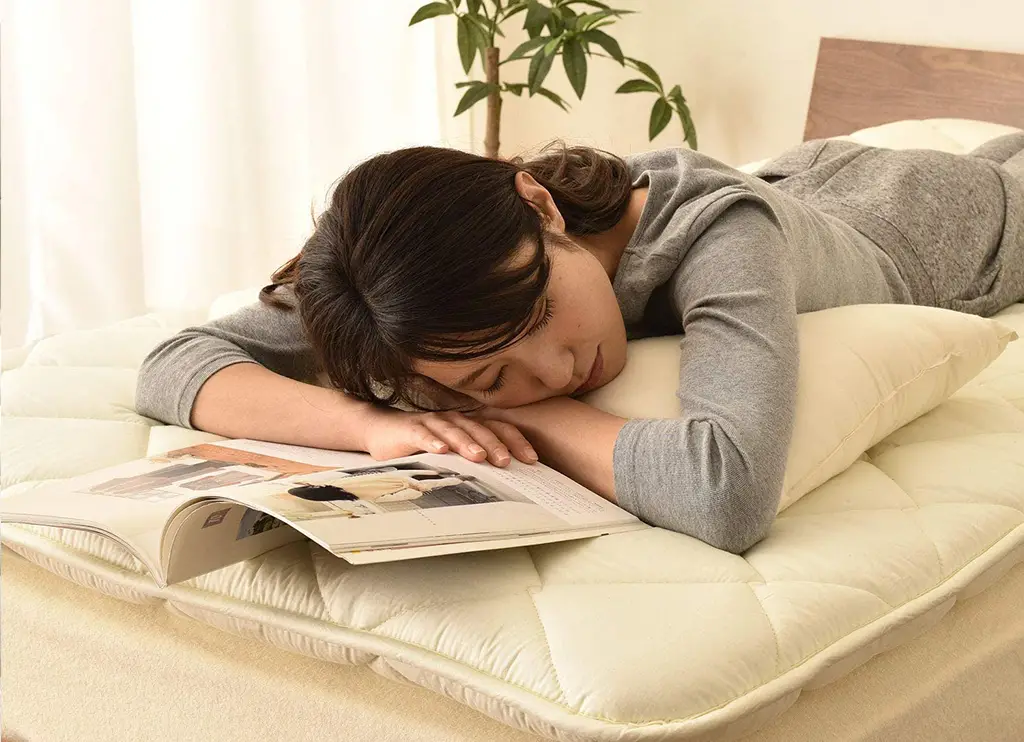
Most of us tend to think that if we have back pain, then we should sleep on something soft and cushiony. However, the opposite is true!
Besides, normal mattresses, which don’t offer as much resistance as the floor does, can impede our circulation and make it difficult for our body to realign during sleep. If you can imagine as you’re sleeping the weight of your body and gravity is pushing down towards whatever surface you’re sleeping on. Now, you do want some resistance, something pushing back so that your body can align. Your blood vessels are in line and your circulation is better.
Let’s hear a review from a Youtuber after his 2-month experience with floor sleeping:
Hygienic
Mattresses are commonly known to have lots of toxins. And yes you can avoid that by finding an organic mattress, but those are also very expensive. And what I really like about sleeping on a futon, is that I can air them out whenever I want. Futons are so lightweight and easy to move that I put my futon out over my balcony once a week to get fresh air and sun.
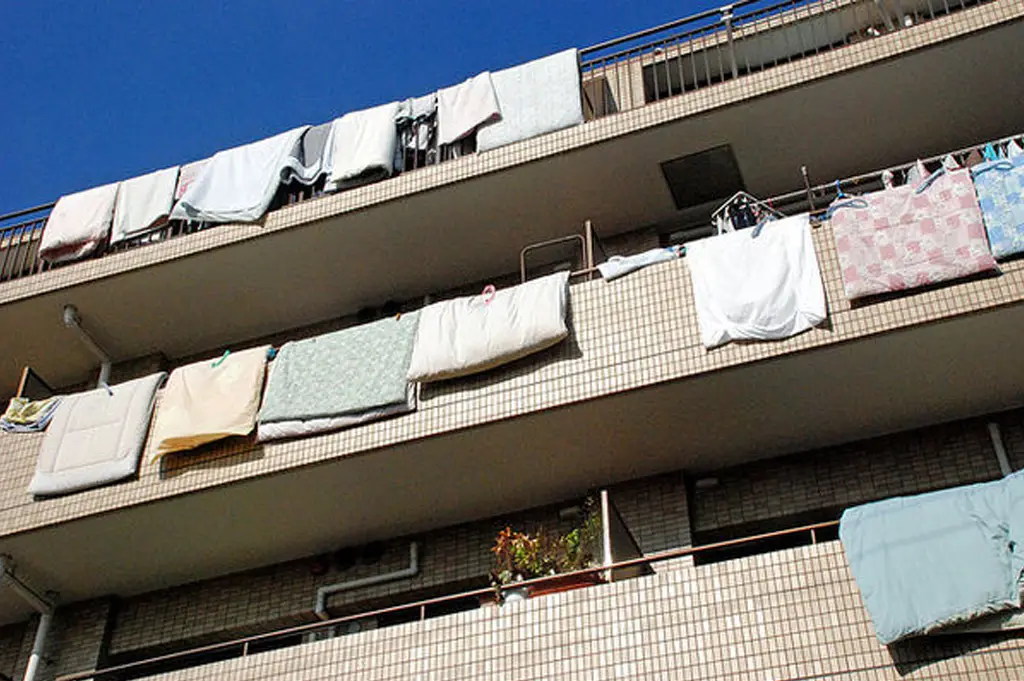
Air Shikibuton in the Sunlight
And that’s something that would be really hard to do with a mattress. So you can find over years that mattress actually gets heavier and heavier because of the bacteria that they’re growing inside of them. In Japan traditionally futons are made of 100% cotton and that is definitely what I would recommend. One, because it’s the most comfortable and two, cotton is a lot less likely to grow bacteria than artificial fabrics like polyester and it’s just nice to know that you’re sleeping on something natural rather than something more like plastic.
Save space in your house
Think about how much surface area your bed takes up – a lot right? If you are into a bit of dancing, exercising or yoga and pilates in your own room, a futon mattress will open your space up to these activities. Because Futons are so easy to fold up and put away, which makes them extremely versatile and you can use your bedroom for a completely different space during the day. You will want to think about where you would store your futon when you’re not sleeping on it. Some people just fold it up and put it on the side of their room. I like to keep ours in the closet so it’s out of sight.
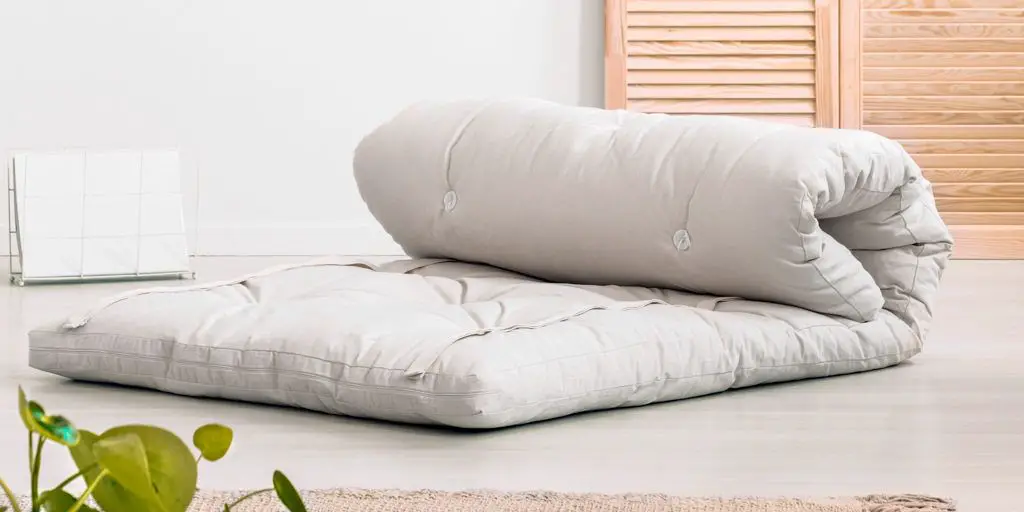
Every morning after waking up, the Japanese fold up their futon mats and either store them in the closet or corner of the room.
You can even take futon on a trip for a comfortable night. And guess what, you don’t need to have a guest bedroom because any space in your house can become a guest bedroom. Just by putting out some futons.
Cheap and Functional
Futons generally cost between just under $100 on the low end and $600 or more on the high end. The size and material of the mattress along with the complexity and design of the frame add up to the cost.
Since they are more economical than regular beds and divans and can serve as both, they are a favored option, especially for college dorm rooms or people living in compact spaces in highly populated areas like Manhattan.
Durable

Much like Japanese people, futons have a particularly splendid life expectancy. With proper care, futons should last between 8 and 15 years as opposed to 10 years maximum for a standard Western mattress.
Why Not a Traditional Japanese Futon?
Moisture Absorption
Even though cotton helps wick away moisture, keep in mind that the human body loses up to a pint glass of water every night when we sleep. Some of that gets evaporated, but a lot of it ends up on the sleeping surface. Furthermore, futon was created to be on the floor and put away during day time–something many people aren’t willing to do. However, if not picking futon up in the morning means it doesn’t have access to proper airflow and can develop mildew, or worse, mold.
You can’t use your normal bed frame
Due to their thin build, you can not use futon directly on a slatted bed frame, those slats can be felt through the mattress (unless multiple shikibutons are used). To solve this, you need especially designed Tatami Frames to hold Tatami Mats, which supply a breathable and perfectly flat surface for your shikibuton! Not only do they handle aeration, but they are nice-looking to boot.
It may be too firm for you
Not everyone finds the firm cushioning made by cotton padding pleasant. Some sleepers may need two layers of shikibuton.
Difficult to Find
If you’re living in Japan it’s very easy to source futons. But perhaps if you’re outside of Japan, in another country, it’s not so common. In fact, most Western futon stores won’t even have them. Fortunately, True Japanese Futons are fairly easy to find online and are usually sold through specialty sleep stores. There are many kinds of cushions that insist to be a Shikibuton, but some contain foam or even innerspring as part of the construction. The crucial thing to keep in mind is the use of cotton in the manufacture to provide a true storable product.
How to Maintain a Japanese Futon
Protect Your Futon from Moisture
There are a few things you can do to prevent too much moisture build-up:
- Lay out the shikibuton(s) on a breathable surface, such as a tatami mat or platform bed. You should also keep the flooring where you place your mat well cleaned.
- Make sure you use a natural cotton protective cover.
- Whenever you can, hang your shikibuton out to dry, and expose it to sunlight
- Flip every week for the first couple of months and then once monthly (check your care instructions). If flipping is not possible, then regularly rotate the bed so that the head area is now at the feet, and vice versa.
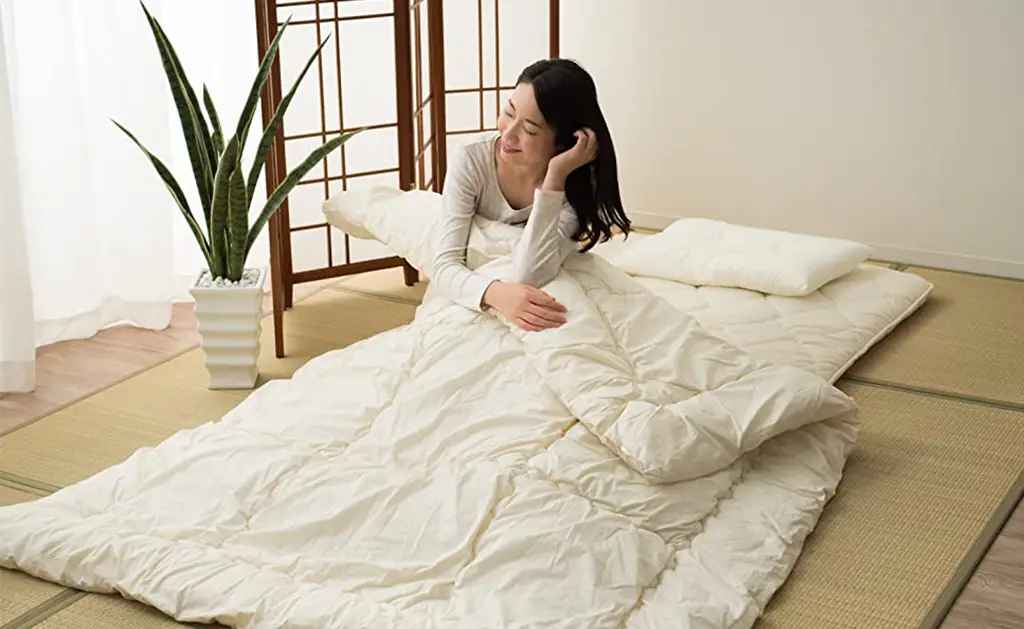
Tatami mat or some sort of frame underneath is frankly a must for proper use.
Keep the Shikibuton from Forming Permanent Dips
- All cotton shikibutons tend to shape dips where the body lies. Provided that you lie in the same spot every night, flip the shikibuton (i.e., head to foot) every few days. Or “fluff” the shikibuton by hanging it up and beating it with a tennis racket.
- Fold the shikifuton in thirds or forths during the daytime to help stretch the fibers you were just compacting while you were sleeping on them.
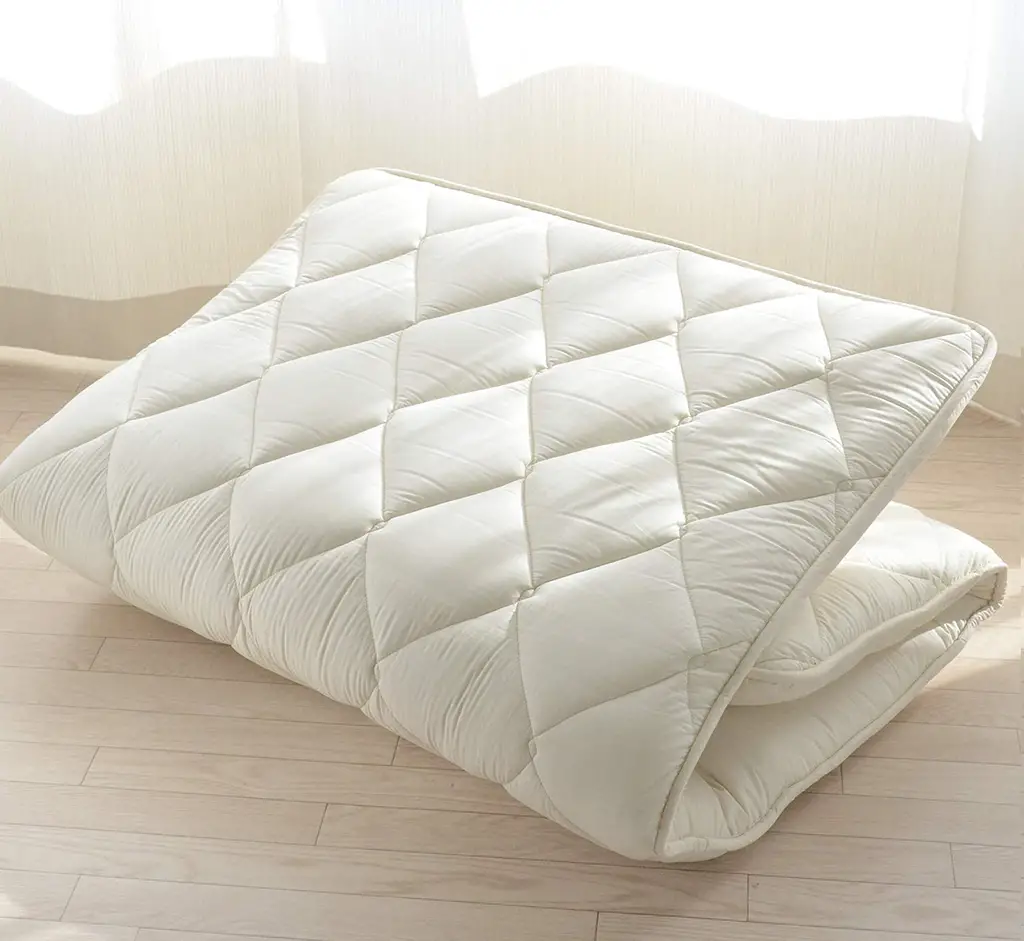
Japanese futons should be rolled or folded when it is not in use.
Cleaning
- Provided that it has a protective cover, follow the cleaning instructions for the cover.
- Wash any organic stain on the futon with a blend of water and detergent. Then saturate the area with rubbing alcohol to help dry and sanitize the area.
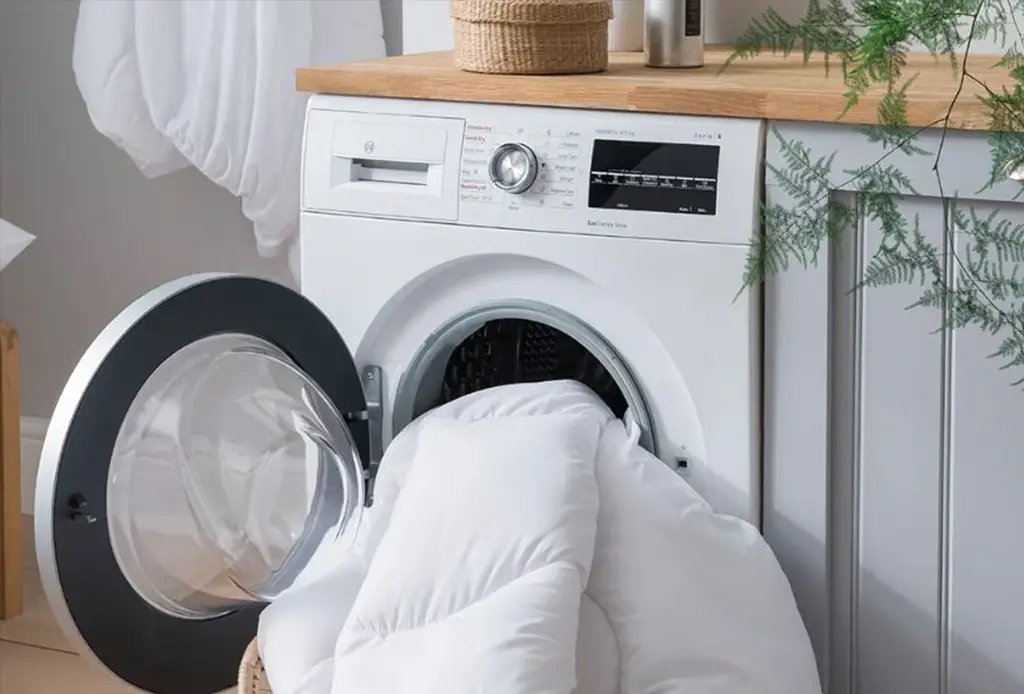
You may wash the cushion in a washing machine- just be sure to check for durability before doing this.
Conclusion
Even though many people in Japan have Western-style mattresses and box springs, futons remain a well-used choice, especially in compact apartments, because they’re easy to move or store away. In fact, Japanese favourite futon so much, they even write a song called “I don’ t wanna get out of futon”. So, if you’ve never considered Japanese bedding before, it may be time to think about making the switch. These beds boast can free up your room, your finances, and your life.

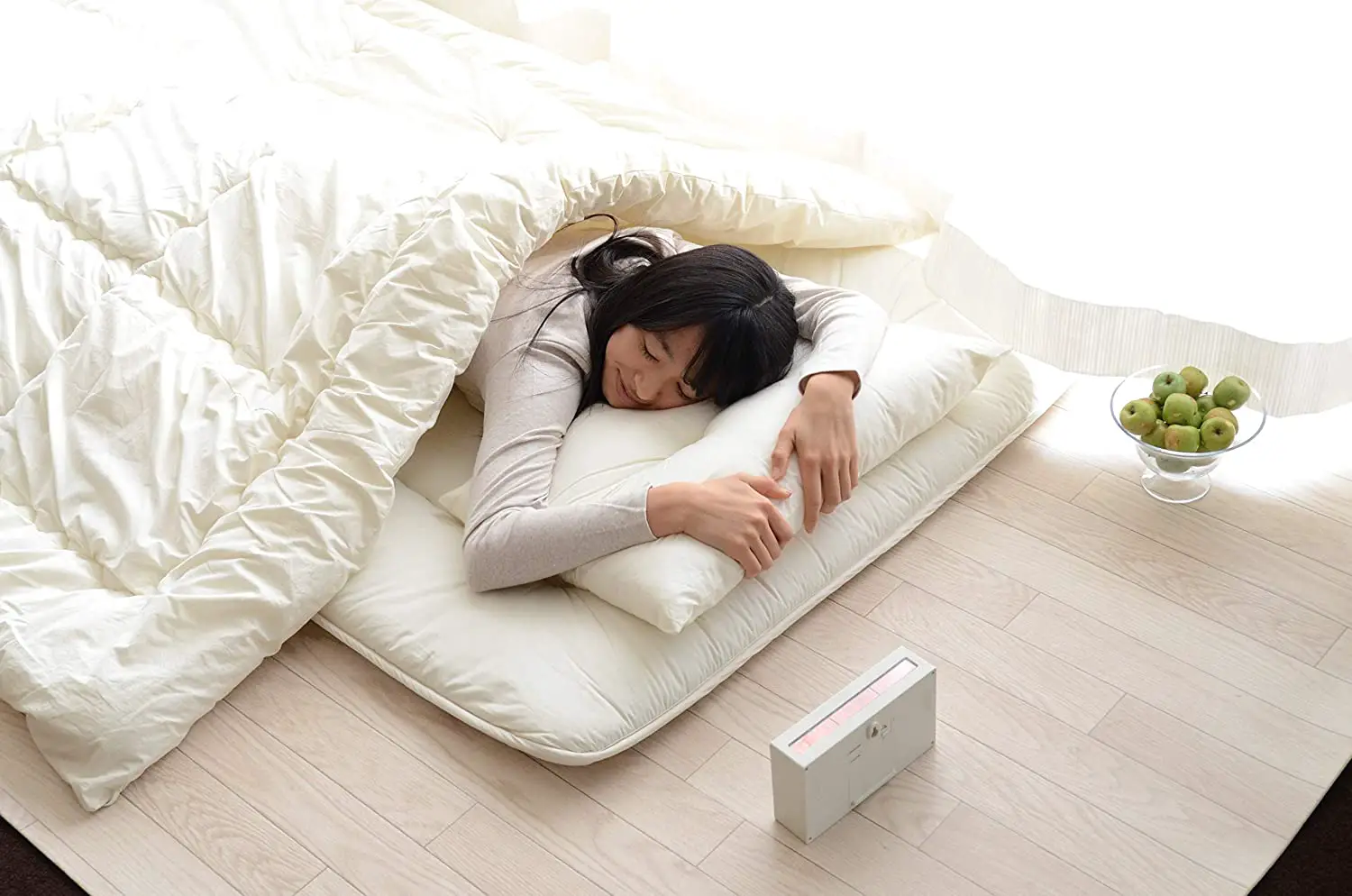








Hello. I do not know if you will have an answer. This may be too specific a queston. I am purchasing a Twin XL shikifuton, 398″ x 80″ x.5″ I am 6’1″ and live in very limited space, which is explains my choice of futon size. First, how do you find sheets for futons and then how would I find sheets that would fit this size of shikifuton. I have tried looking through Amazon Japan and have had very little luck there. Are there specific Japanese words I could use to search on the web or certain stores in Japan that would be most likely to have something like this? I am willing to pay to a certain point if I have to have sheets modified. I just hate to think that I will just have to use oversized sheets that never fit my futon. Any help would be appreciated.